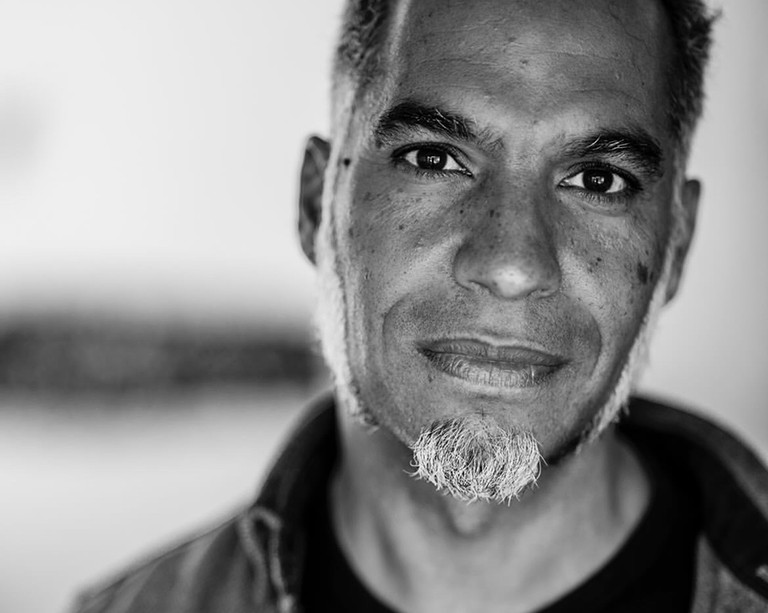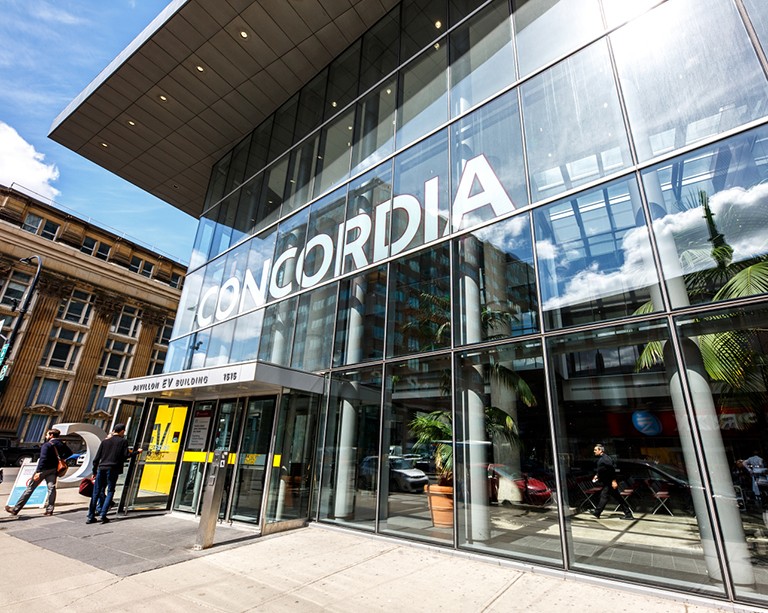Artist and alumnus Charles Campbell’s proposal chosen to inaugurate the Honouring Black Presence at Concordia public art program

The first-ever selected artist to create an installation for the public art program Honouring Black Presence at Concordia is Charles Campbell, BFA 92.
Coinciding with Concordia’s 50th anniversary celebrations, Campbell’s installation will be unveiled in spring 2025 at the Bishop Street entrance to the Henry F. Hall Building. Those that pass through, remain, return will inhabit this space for three years.
Ephemeral artwork, concrete action
The goal of the new program is to celebrate the histories, presence and futures of Black Concordians through the presentation of ephemeral public artworks. It is one of many concrete actions in the final report of the President’s Task Force on Anti-Black Racism.
The first Canada-wide call for Black artists with a connection to Concordia or Montreal’s Black communities resulted in 21 submissions. Campbell was honoured to be considered alongside the other finalists. “In a perfect world we’d be collaborating, not competing,” he adds.
Just the beginning
All four finalists praised the university’s move to acknowledge Black histories and to follow through on recommendations from the task force.
“This is just the beginning,” says Anne Whitelaw, Concordia’s provost and vice-president, academic. “We need to continuously examine the practices that Concordia inherited from its founding institutions. This includes reflecting on those we have chosen to honour and those we have excluded.
“These unexamined practices have led to the erasure of the histories and experiences of generations of Black Concordians, including in the university's public art collection. Our commitment to inclusion needs to be unwavering and measurable if we are to enact real change at the university.”
Cynthia Alphonse, project coordinator for the President’s Task Force on Anti-Black Racism, notes that “supporting this initiative is one of the ways the university and wider community can help celebrate and honour the contributions of Black peoples to Concordia.”
Campbell’s winning project will elicit multi-sensorial engagement. “There’s more than one way to appreciate the artwork and I think it will speak to people in different ways, provoking reflection — both as a collective and individually,” Alphonse says.
“I believe the community will connect with this installation. The maquette alone was very impressive. We’re really looking forward to seeing it at scale.”
Those that pass through, remain, return
Originally from Jamaica, Campbell is a multidisciplinary artist, writer and curator who employs sculpture, painting, sonic installations and performance to animate the future imaginaries possible in the wake of slavery and colonization.
Campbell describes his most recent work as a response to the politically vital and gut-wrenchingly difficult summer of 2020 — “to the plea from a dying man to his murderer, a cry against injustice: ‘I can’t breathe.’”
Foregrounding Black breath, Campbell foregrounds life. “I’m looking for an antidote to the instrumentalization of Black bodies and the usual routes of validation: achievement, excellence, suffering, resilience.” He asks: “Can we have a space where it is enough just to breathe?”
Those that pass through, remain, return builds on the notion of breath as a conveyer of experience and of memory. Campbell says that this is a nod to the transitory and enduring presence of Montreal's Black community: “to our ongoing relationship with our ancestors.”
Seven “Breath Portraits” will be created from sound recordings of the breath of Black individuals with a relationship to Montreal and to Concordia. Akin to stained glass, these “breath portraits” will visually represent the breath recordings and will transform the windows and doors into columns of colour. Their auditory inspiration will be broadcast via strategically placed speakers.
Filling the Hall Building with the breath of Black community members, Campbell describes the piece as an attempt to “make tangible the way Black presence transforms a space, filling it with colour and light and deepening our connection to our spiritual roots. Here, Black breath, and by extension Black presence, will be held up for its ability to heal, connect and transform the spaces we inhabit.”
First of its kind
Sandra Margolian, public art lead at Concordia, is honoured to have been trusted by the President’s Task Force on Anti-Black Racism as a partner in the creation of this program.
“I’m excited to see Charles’s proposal come to life, working with him and Concordia experts to integrate this visually powerful and intimate work into the Hall Building. This is the first of its kind as part of public art at Concordia,” Margolian says.
Campbell’s fully developed installation will be unveiled next spring.
Those who wish to celebrate the foundational work and contributions of Black communities and students to the university can do so by donating to the Honouring Black Presence at Concordia initiative.
Find out more about the President’s Task Force on Anti-Black Racism at Concordia.
Learn more about the Honouring Black Presence Public Art Program.


